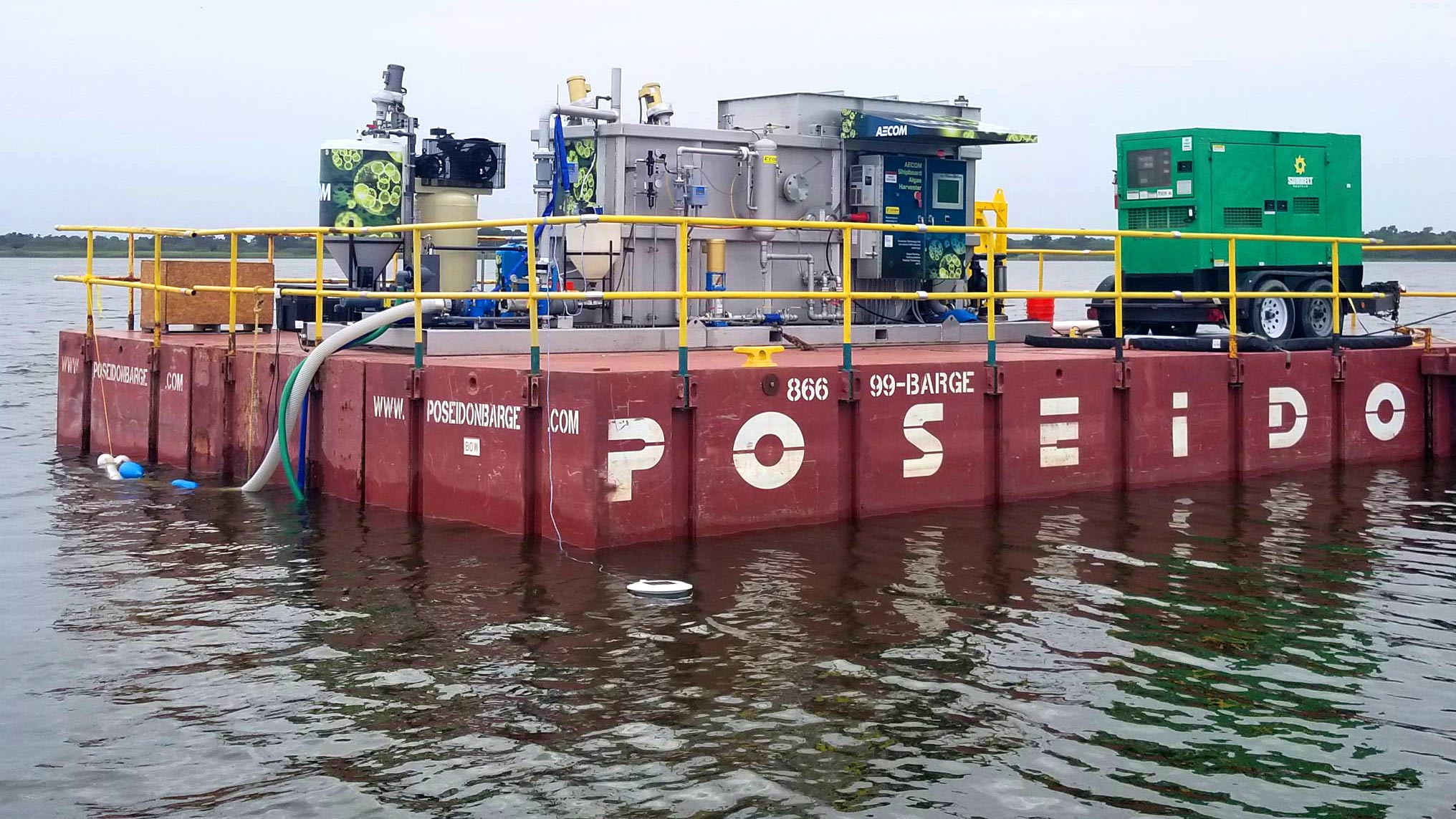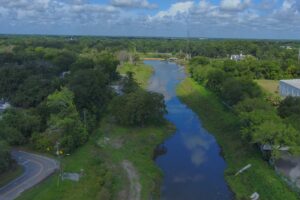Pilot project is latest step forward to improve Lake Jesup’s water quality
Sept. 2, 2021
A harvesting unit mounted on a barge is being transported around Lake Jesup so that algae can be harvested at various locations.
The St. Johns River Water Management District’s work to improve water quality continues, with a pilot project now underway at Lake Jesup.
As part of our core missions focus, we launched the pilot project in early August to harvest and remove algae, suspended solids and associated nutrients from Lake Jesup’s waters to help the District determine the potential for a full-scale system to help achieve state water quality standards for the lake. The project received $1.65 million in a 2020 Harmful Algal Bloom Innovate Technology Project Grant through the Florida Department of Environmental Protection (DEP) and is expected to last eight months.
We’ve accomplished a great deal of work since our Governing Board made Lake Jesup a priority basin nearly 20 years ago, starting with DEP’s adoption of Total Maximum Daily Loads for phosphorus. Working with many partners, we are making progress to reduce nutrient sources and concentrations to improve the lake’s water quality and clarity.
In this latest project, a harvesting unit mounted on a barge is being transported around Lake Jesup so that algae can be harvested at various locations. An innovative dissolved air flotation technology will be used to attach microscopic air bubbles to algae and suspended sediment, allowing efficient separation of algal biomass and clarified water. Clarified water will return to the lake while algal biomass will be managed/treated at Seminole County’s Yankee Lake Wastewater Treatment Plant.
Also at Lake Jesup, the District’s Governing Board approved a contract in March 2020 to design and permit the Lake Jesup Nutrient Reduction and Flow Enhancement Project to encompass a wetland treatment system located within the District’s Lake Jesup Conservation Area. Completion of the design and permitting is ongoing.
Lake Jesup, the largest lake in Seminole County, is a hydrologically complex system with a large, urbanized watershed. The lake is shallow with a relatively low flushing rate and drains a 150-square-mile watershed, including portions of Oviedo, Sanford, Winter Park, Casselberry, Maitland, Longwood, Altamonte Springs, Lake Mary, Eatonville, Winter Springs and Orlando in Seminole and Orange counties.
Learn more about our ongoing work to benefit Lake Jesup at www.sjrwmd.com/projects/#lake-jesup.






